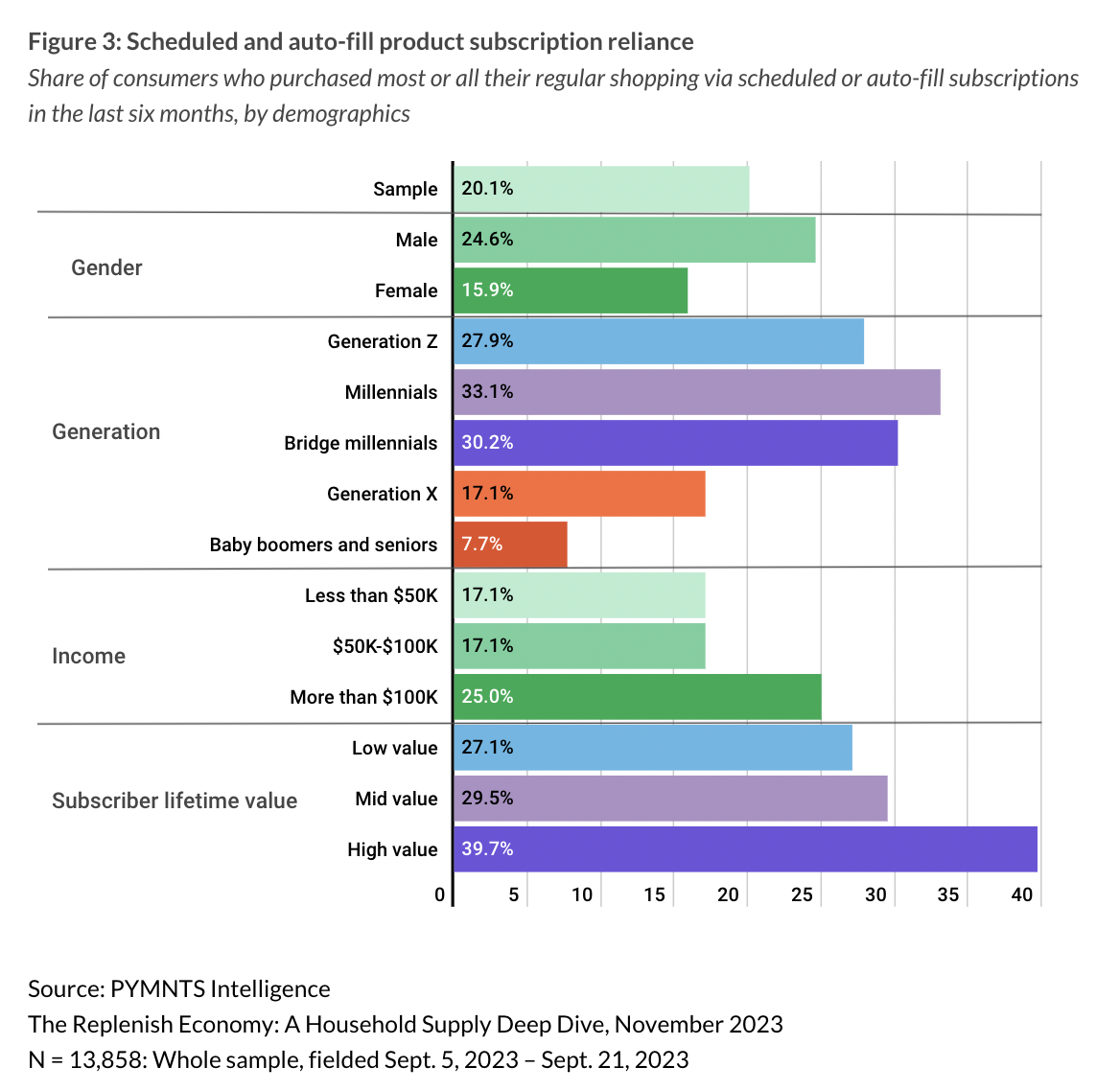
Brands trying to target high-income consumers may want to look to auto-fill subscription models.
The PYMNTS Intelligence report “The Replenish Economy: A Household Supply Deep Dive” drew from a survey of more than 2,000 U.S. consumers in September to better understand their subscription habits and how these affect their overall shopping behaviors.

Supplemental research from the study highlighted in Karen Webster’s Jan. 8 feature “The Eight Pivotal Strategies for Payments and the Digital Economy in 2024” revealed that high-income consumers are the most likely to rely on scheduled subscriptions for the bulk of their shopping.
Specifically, 25% of consumers who earn more than $100,000 per year reported that they bought most or all their regular shopping via scheduled or auto-fill subscriptions in the previous six months. The share is above the 20% of the overall population who said the same, and higher than the 17% of those who earn less than $100,000 per year who do so.
“The replenishment economy turns the notion of shopping into editing (if need be) an already curated list of items that are frequently purchased at a specific interval,” Webster observed in the feature.
“Today, replenishment is done across a variety of direct-to-consumer sites, retailers who want in on the recurring sales opportunity for relevant SKUs, and Amazon Subscribe & Save, a service that now counts 18.5 million U.S. consumers as customers,” she added. “But it won’t stop there.”
These kinds of subscriptions work best for consumables that shoppers go through on a day-to-day basis.
“Subscribe & Save doesn’t work with a lot of items because people don’t consume them on a day-to-day basis,” Brett Cramer, owner of seasonings brand The Spice Lab — which abandoned the model — told PYMNTS in an interview last year. “It has to be a product that people consume in less than 30 days.”